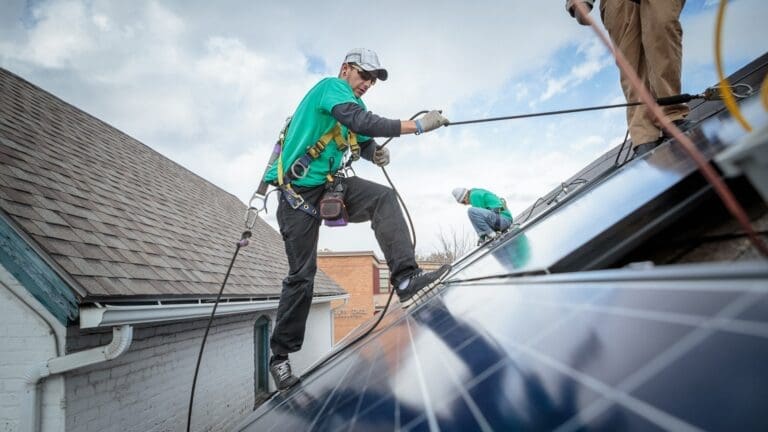
While an increasing number are aware of the advantages energy efficiency improvements may bring, many fail to get projects off the ground because they are confused by misleading information. Nicola Kennedy, CEO of Heero Technologies, discusses how technology, and new apps in particular, can enable installers to accurately inform homeowners on the processes involved to quickly dispel retrofitting misconceptions.
Getting the facts straight
A barrier for many seeking to make energy-efficiency improvements is that they struggle to make sense of the advice, government support and financing available for installing renewable solutions. The outcome, according to Energy UK, is that homeowners do nothing. Their report showed that more than two-thirds of homeowners made no energy efficiency improvements in 2023. When asked why, 35% thought they wouldn’t be able to afford the upfront costs, 11% were unsure whether the savings would make it a worthwhile investment and 8% considered the process too much trouble.
Energy UK’s statistics clearly show that misconceptions around retrofitting play a key role in homeowner indecision. Many are of the opinion that energy efficiency improvements are expensive and disruptive and so, not worth the investment and effort. Additional research, this time conducted by Lloyds Banking Group, showed that a lack of knowledge was another factor holding back consumers from making retrofit decisions.
Aside from unfamiliarity with retrofitting terminology, much of the advice available can be misleading and, at times, contradictory. Articles and websites promoting one type of energy-efficiency improvement frequently exaggerate the negatives of alternative solutions, leaving homeowners confused about which, if any, they should choose.
Furthermore, with many sources of information being opinionated rather than unbiased, there are too many unsupported views about the grants or financial help available; the level of disruption that different solutions create; the types of properties they are suitable for, and the energy efficiencies they can bring.
The role for installers
Installers can not only play a crucial role in providing homeowners with a knowledgeable service and educating them about the true nature and value of the retrofitting process, they can also use these occasions to engage with customers about the suite of services they provide.
The first thing that homeowners need to understand is that every home is different. This means explaining the costs of buying and installing energy efficiency measures, also the energy savings they will deliver and how the nature of their property will have an impact on this. Discussing the suitability of different products for different homes can also better manage expectations regarding disruption caused by the retrofit process.
As guidance provided for a wide audience can only discuss matters in general, with access to valuable information, installers can be at the forefront of the retrofitting revolution. They can convey their knowledge to the homeowner, to help them better understand the best solutions for their properties. Only armed with this information and the dedicated guidance from their chosen installer, will homeowners be able to make a truly informed decision and get projects underway.
Clear and up-to-date information about grants and other financial support is also essential. This shouldn’t just cover the available financing options, but also eligibility criteria, terms and conditions and application deadlines. A problem for homeowners is that when they search online for financial support, there remains a lot of information about grants and funding schemes that are no longer available. As many of these web pages have not been updated, it is confusing and makes finding active schemes more challenging.
The good news is that help with financing is set to increase. The new Labour government wants all UK homes to have an EPC rating of C or above within the next decade, which means over 19 million homes will require energy efficiency retrofits. As part of this strategy, the government has ringfenced £6.6 billion of funding for its Warmer Homes Plan which aims to improve 5 million homes in the next five years. As a result, grants and low-interest loans will be offered to install solutions like solar energy, insulation and low-carbon heating.
A helping hand
New apps can play an invaluable role in providing installers with the personalised advice needed to educate homeowners about the suitability of different measures for retrofitting their homes. These apps provide accurate and clear information on the various retrofitting and energy effectiveness measures available, together with efficiency predictions and project recommendations that consider the actual property.
What’s more, they offer up-to-date information on grants and financing opportunities as well as providing details about skilled, local and pre-qualified suppliers. What this means is all available and relevant funding and grant information is available to view in seconds, in one place, allowing the installer to accurately determine options, with the homeowner.
Another issue that homeowners struggle with, is choosing the right companies to complete retrofitting projects. A quarter of householders say they need help finding tradespeople with the necessary skills, which is an understandable concern given that energy efficiency retrofits increasingly make use of newer technologies, techniques and materials.
As a knowledgeable source, installers can take the high ground and be recognised as providing professional advice and guidance for all stages of the retrofit process including, costs, products, energy savings achieved, environmental benefits, finance options and much more.

Image credit: Heero Technologies
Note : Installer is the feature image, put the headshot at the bottom right of article with caption.


